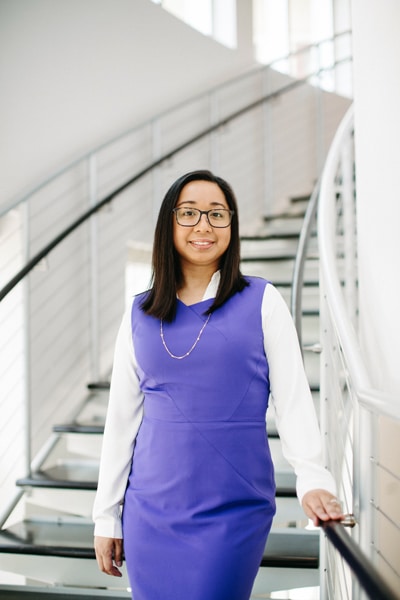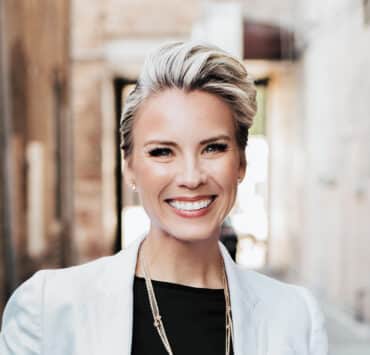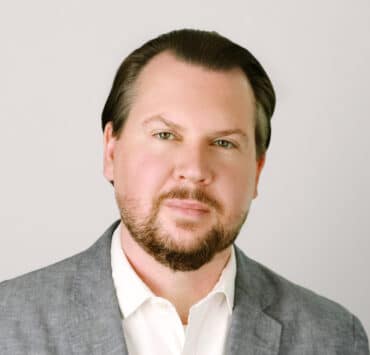|
Getting your Trinity Audio player ready...
|
“I realized pretty quickly that I did not want to be a mechanical engineer,” says Marylauren Ilagan when discussing her path to law. For someone who was deep in her studies in engineering at the time, that realization may have been a hard pill to swallow, but it was Ilagan’s first step toward becoming the intellectual property director for Mary Kay.
“I loved studying mechanical engineering,” Ilagan says of her time at Rice University. “I wanted to design machines, and my dream was to work someday for Walt Disney Imagineering.” But her internship experiences quickly disillusioned her of that notion, as she discovered that jobs for entry-level engineers were far from the glitz and glamour of theme park designs.
That left her with two choices: go to grad school and earn her master’s degree or change fields entirely. Oddly enough, those internships helped point Ilagan in another direction. “I was exposed to patent law for the first time during an internship,” she recalls. “It intrigued me to see how my coengineers were so proud of the patents they received that they hung plaques up in their office to show them off.” Part of patent law’s appeal was Illagan’s own preference for “application-based learning”—not simply learning abstract concepts but the ways those concepts can affect the real world and how patent law protected those innovations.
While earning her JD from the University of New Hampshire’s Franklin Pierce School of Law in 2008, Ilagan held externships where she drafted numerous patent applications on behalf of real-world inventors and learned to prosecute them before the USPTO, including arguing against prior art rejections, defending patent validity, and other nuts-and-bolts issues. “It was a great training experience for me,” Ilagan notes, “and helped me transition into being a practicing attorney.”
After graduation, she joined Novak Druce + Quigg as a patent attorney.
“Novak Druce was a boutique firm that concentrated on intellectual property,” Ilagan says. “I spent much of my four years there drafting patent applications related to electrical arts—computer software, internet-based services, and mobile apps—and prosecuting them to issuance.”

The creative-thinking skills and emphasis on practical, solution-oriented counseling she developed during her Novak Druce tenure carried over to her current position as director of intellectual property for Mary Kay.
“Patent attorneys often must be creative when drafting a patent,” she explains. “You need to define a new invention precisely and broadly, with an eye on the future of that industry. Precision will protect the device now, but patents last for twenty years, and the terminology you use today may not be relevant in the future. Your language must also be broad enough to prevent competitors from designing around your product. That’s why patent attorneys often serve as their own lexicographers.”
Protecting Mary Kay’s intellectual property is similar. Ilagan manages the company’s entire IP portfolio: trademarks, patents, products, copyrights, trade secrets, and even the use of Founder Mary Kay Ash’s name and image.
Ilagan’s day-to-day work focuses on clearing proposed brand names and new products and then protecting them worldwide. “We have about eight thousand trademarks, and their protections are all jurisdiction based. That is, we must register them everywhere we plan to use them, not just in the US,” she explains.
And just as a patent attorney must consider future possibilities, so must Ilagan. “We really need to anticipate where things are heading,” she says. “For example, we offer several skincare products, but if the marketplace is trending toward meshing skincare with some nutritional supplements, we need to be sure the Mary Kay brand is protected in those new categories.
“Without that coverage,” she elaborates, “someone might try to capitalize on our famous Mary Kay brand in those new categories before we do.” (And misuse of the name can be far-ranging. Ilagan tells of finding a company that was illegally selling Mary Kay-branded lumber.)
Matt Mowers, COO and head of Quinn IP Law’s international trademark and brand enforcement practice, recognizes Ilagan’s talent in aligning IP strategy with Mary Kay’s business goals.
“Marylauren encourages collaboration between Mary Kay’s legal team and its outside counsel to implement innovative strategies for procuring and enforcing Mary Kay’s IP rights,” Mowers says. “She is also a thought leader in the IP community and frequently engages legal and technical experts outside of the cosmetics industry to identify approaches that will further enhance Mary Kay’s technology and branding initiatives.”
Ilagan and her team’s biggest challenge is tracking down counterfeit and illegally sold merchandise. “Our business model centers on direct person-to-person sales,” she says. “That’s why you do not see Mary Kay products in retail stores.”
But what about Mary Kay items found on Amazon or eBay? “That can be a challenge,” Ilagan says. “With e-commerce, it’s hard to find an actual person whom you can take enforcement against. Plus, on-demand merchandising and selling online has become easier and accessible to everyone. We’ve been ramping up our online brand enforcement efforts over the last few years, especially during the pandemic.”
“Names need to be informative, creative, and catchy, and we help [the brand team] understand the risks of potentially overlapping with another company’s existing trademark.”
Ilagan’s team includes one additional attorney (a senior IP counsel) and four paralegals. Although she reports directly to the company’s deputy general counsel and vice president of intellectual property and innovation, she and her team also work closely with chief marketing and chief scientific officers on subjects as diverse as lip-gloss color names and skincare product formulations.
“We work side by side with the brand team when they develop product names,” she explains. “Names need to be informative, creative, and catchy, and we help them understand the risks of potentially overlapping with another company’s existing trademark.
“It’s a similar situation with patents,” she continues. “Patents are valuable assets, but they can get expensive to maintain. Once a patent is granted, you must pay fees to maintain its validity, and oftentimes those fees increase as the patent ages. We need to be strategic in maintaining a patent and balance its projected value against those costs. Sometimes it makes better business sense to let go of those aging and dormant patents.”
Other considerations include a product’s potential life span and overall business objectives. “Reach” factors in as well: what is its degree of exposure, and is it available to all consumers? Maybe it’s a limited-edition gift with purchase or a giveaway for a charity initiative.
Because there are so many variables, Ilagan says, these discussions are never in pure black-and-white terms. Ilagan adds that her team’s bailiwick has grown substantially over the past several years. “Looking back to 2012, when I first joined Mary Kay, our portfolio of patents, trademarks, and other IP has significantly grown—our trademark portfolio alone has doubled since then,” she says.
“Marylauren exemplifies Mary Kay’s belief in being your own personal best and in reaching success by helping others succeed,” says Marijo Coates, Canadian outside trademark counsel for Mary Kay for more than two decades. “The company’s philosophy of helping each other reach goals, established almost sixty years ago, is just as relevant in today’s world. Marylauren exhibits trust and confidence in her colleagues, both inside Mary Kay and her outside counsel, and has all of us working as a team in more than forty countries around the world. She is truly inspiring—and fun—to work with.”
Ilagan’s mentors taught her the importance of surrounding herself with trusted teammates, ones who can be sounding boards and who will provide reliable, honest feedback. She’s followed through on that with her own team.
“I picked people I trusted, who had varied backgrounds and experiences. Those differing perspectives can help us arrive at creative and effective solutions,” she says. “I encourage them to improve their soft skills—they’ll be better leaders themselves—and I make sure to give them work that excites them, so they’ll enjoy the work they do and take pride in it. I also stress the importance of being curious, of learning as much as you can. Curiosity hones analytical thinking and ensures we are providing sound, practical, and attractive solutions for our business teams.”

